Car Driving Simulation Assesment Report
VerifiedAdded on 2022/09/12
|10
|1197
|18
AI Summary
Contribute Materials
Your contribution can guide someone’s learning journey. Share your
documents today.
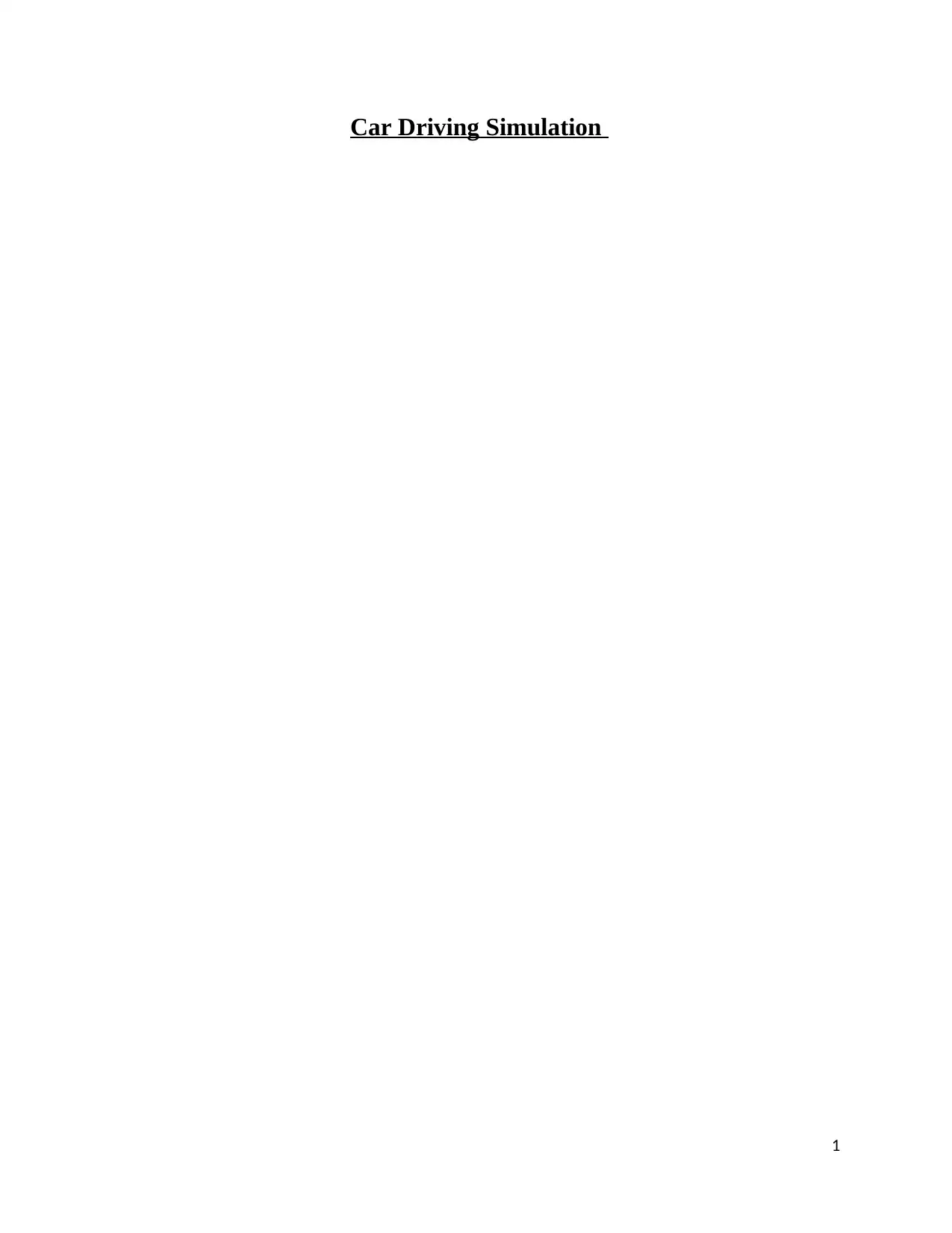
Car Driving Simulation
1
1
Secure Best Marks with AI Grader
Need help grading? Try our AI Grader for instant feedback on your assignments.
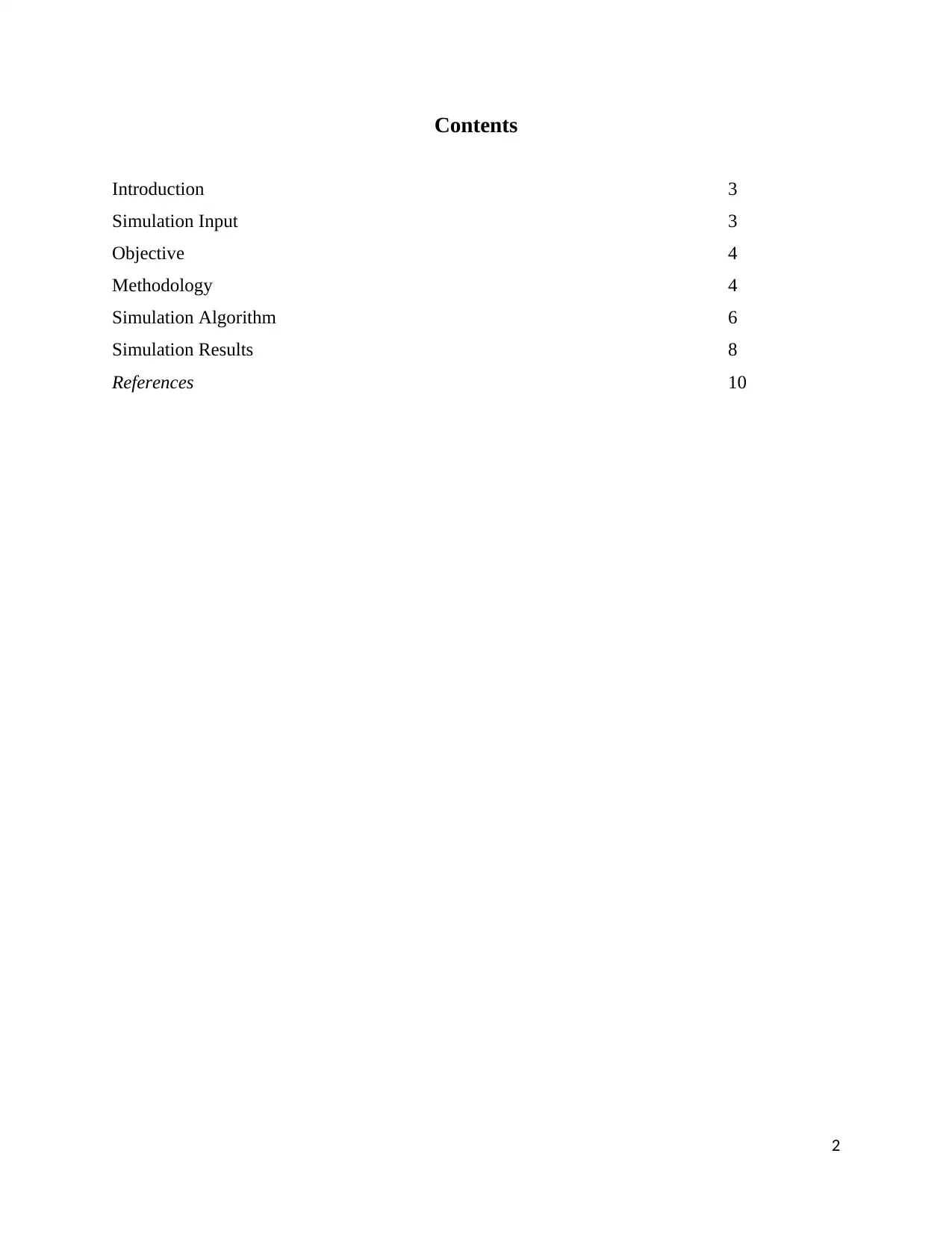
Contents
Introduction 3
Simulation Input 3
Objective 4
Methodology 4
Simulation Algorithm 6
Simulation Results 8
References 10
2
Introduction 3
Simulation Input 3
Objective 4
Methodology 4
Simulation Algorithm 6
Simulation Results 8
References 10
2
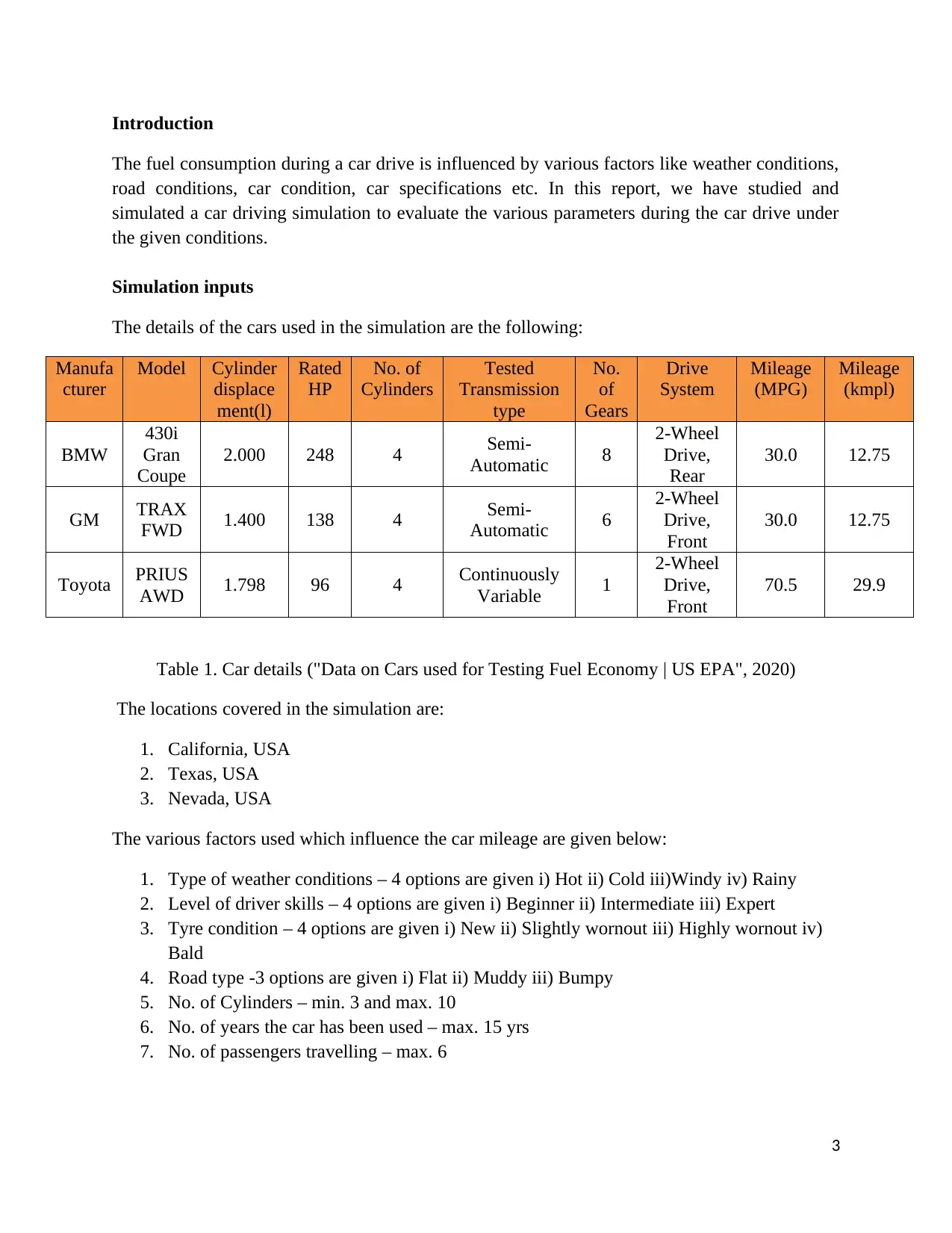
Introduction
The fuel consumption during a car drive is influenced by various factors like weather conditions,
road conditions, car condition, car specifications etc. In this report, we have studied and
simulated a car driving simulation to evaluate the various parameters during the car drive under
the given conditions.
Simulation inputs
The details of the cars used in the simulation are the following:
Manufa
cturer
Model Cylinder
displace
ment(l)
Rated
HP
No. of
Cylinders
Tested
Transmission
type
No.
of
Gears
Drive
System
Mileage
(MPG)
Mileage
(kmpl)
BMW
430i
Gran
Coupe
2.000 248 4 Semi-
Automatic 8
2-Wheel
Drive,
Rear
30.0 12.75
GM TRAX
FWD 1.400 138 4 Semi-
Automatic 6
2-Wheel
Drive,
Front
30.0 12.75
Toyota PRIUS
AWD 1.798 96 4 Continuously
Variable 1
2-Wheel
Drive,
Front
70.5 29.9
Table 1. Car details ("Data on Cars used for Testing Fuel Economy | US EPA", 2020)
The locations covered in the simulation are:
1. California, USA
2. Texas, USA
3. Nevada, USA
The various factors used which influence the car mileage are given below:
1. Type of weather conditions – 4 options are given i) Hot ii) Cold iii)Windy iv) Rainy
2. Level of driver skills – 4 options are given i) Beginner ii) Intermediate iii) Expert
3. Tyre condition – 4 options are given i) New ii) Slightly wornout iii) Highly wornout iv)
Bald
4. Road type -3 options are given i) Flat ii) Muddy iii) Bumpy
5. No. of Cylinders – min. 3 and max. 10
6. No. of years the car has been used – max. 15 yrs
7. No. of passengers travelling – max. 6
3
The fuel consumption during a car drive is influenced by various factors like weather conditions,
road conditions, car condition, car specifications etc. In this report, we have studied and
simulated a car driving simulation to evaluate the various parameters during the car drive under
the given conditions.
Simulation inputs
The details of the cars used in the simulation are the following:
Manufa
cturer
Model Cylinder
displace
ment(l)
Rated
HP
No. of
Cylinders
Tested
Transmission
type
No.
of
Gears
Drive
System
Mileage
(MPG)
Mileage
(kmpl)
BMW
430i
Gran
Coupe
2.000 248 4 Semi-
Automatic 8
2-Wheel
Drive,
Rear
30.0 12.75
GM TRAX
FWD 1.400 138 4 Semi-
Automatic 6
2-Wheel
Drive,
Front
30.0 12.75
Toyota PRIUS
AWD 1.798 96 4 Continuously
Variable 1
2-Wheel
Drive,
Front
70.5 29.9
Table 1. Car details ("Data on Cars used for Testing Fuel Economy | US EPA", 2020)
The locations covered in the simulation are:
1. California, USA
2. Texas, USA
3. Nevada, USA
The various factors used which influence the car mileage are given below:
1. Type of weather conditions – 4 options are given i) Hot ii) Cold iii)Windy iv) Rainy
2. Level of driver skills – 4 options are given i) Beginner ii) Intermediate iii) Expert
3. Tyre condition – 4 options are given i) New ii) Slightly wornout iii) Highly wornout iv)
Bald
4. Road type -3 options are given i) Flat ii) Muddy iii) Bumpy
5. No. of Cylinders – min. 3 and max. 10
6. No. of years the car has been used – max. 15 yrs
7. No. of passengers travelling – max. 6
3
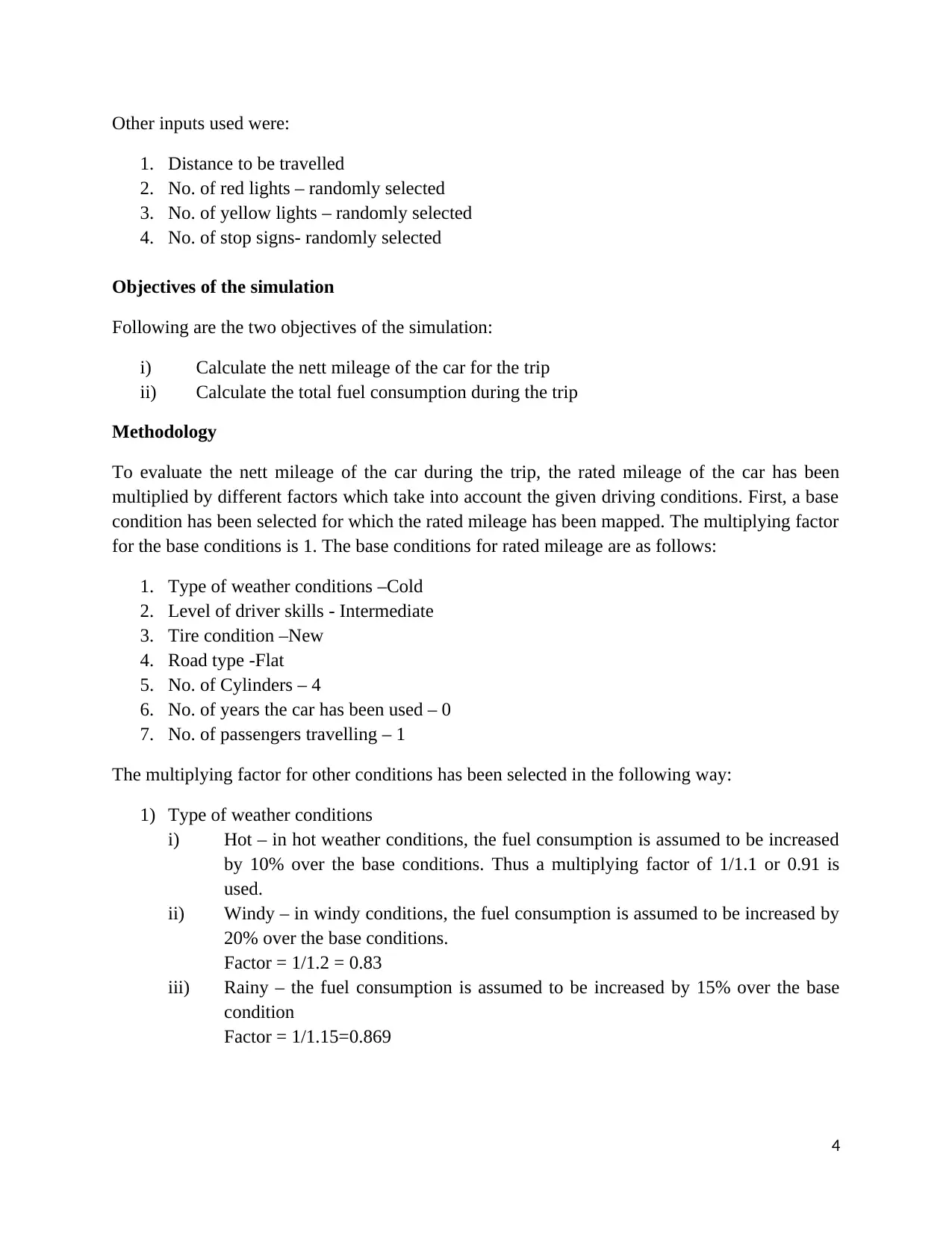
Other inputs used were:
1. Distance to be travelled
2. No. of red lights – randomly selected
3. No. of yellow lights – randomly selected
4. No. of stop signs- randomly selected
Objectives of the simulation
Following are the two objectives of the simulation:
i) Calculate the nett mileage of the car for the trip
ii) Calculate the total fuel consumption during the trip
Methodology
To evaluate the nett mileage of the car during the trip, the rated mileage of the car has been
multiplied by different factors which take into account the given driving conditions. First, a base
condition has been selected for which the rated mileage has been mapped. The multiplying factor
for the base conditions is 1. The base conditions for rated mileage are as follows:
1. Type of weather conditions –Cold
2. Level of driver skills - Intermediate
3. Tire condition –New
4. Road type -Flat
5. No. of Cylinders – 4
6. No. of years the car has been used – 0
7. No. of passengers travelling – 1
The multiplying factor for other conditions has been selected in the following way:
1) Type of weather conditions
i) Hot – in hot weather conditions, the fuel consumption is assumed to be increased
by 10% over the base conditions. Thus a multiplying factor of 1/1.1 or 0.91 is
used.
ii) Windy – in windy conditions, the fuel consumption is assumed to be increased by
20% over the base conditions.
Factor = 1/1.2 = 0.83
iii) Rainy – the fuel consumption is assumed to be increased by 15% over the base
condition
Factor = 1/1.15=0.869
4
1. Distance to be travelled
2. No. of red lights – randomly selected
3. No. of yellow lights – randomly selected
4. No. of stop signs- randomly selected
Objectives of the simulation
Following are the two objectives of the simulation:
i) Calculate the nett mileage of the car for the trip
ii) Calculate the total fuel consumption during the trip
Methodology
To evaluate the nett mileage of the car during the trip, the rated mileage of the car has been
multiplied by different factors which take into account the given driving conditions. First, a base
condition has been selected for which the rated mileage has been mapped. The multiplying factor
for the base conditions is 1. The base conditions for rated mileage are as follows:
1. Type of weather conditions –Cold
2. Level of driver skills - Intermediate
3. Tire condition –New
4. Road type -Flat
5. No. of Cylinders – 4
6. No. of years the car has been used – 0
7. No. of passengers travelling – 1
The multiplying factor for other conditions has been selected in the following way:
1) Type of weather conditions
i) Hot – in hot weather conditions, the fuel consumption is assumed to be increased
by 10% over the base conditions. Thus a multiplying factor of 1/1.1 or 0.91 is
used.
ii) Windy – in windy conditions, the fuel consumption is assumed to be increased by
20% over the base conditions.
Factor = 1/1.2 = 0.83
iii) Rainy – the fuel consumption is assumed to be increased by 15% over the base
condition
Factor = 1/1.15=0.869
4
Secure Best Marks with AI Grader
Need help grading? Try our AI Grader for instant feedback on your assignments.
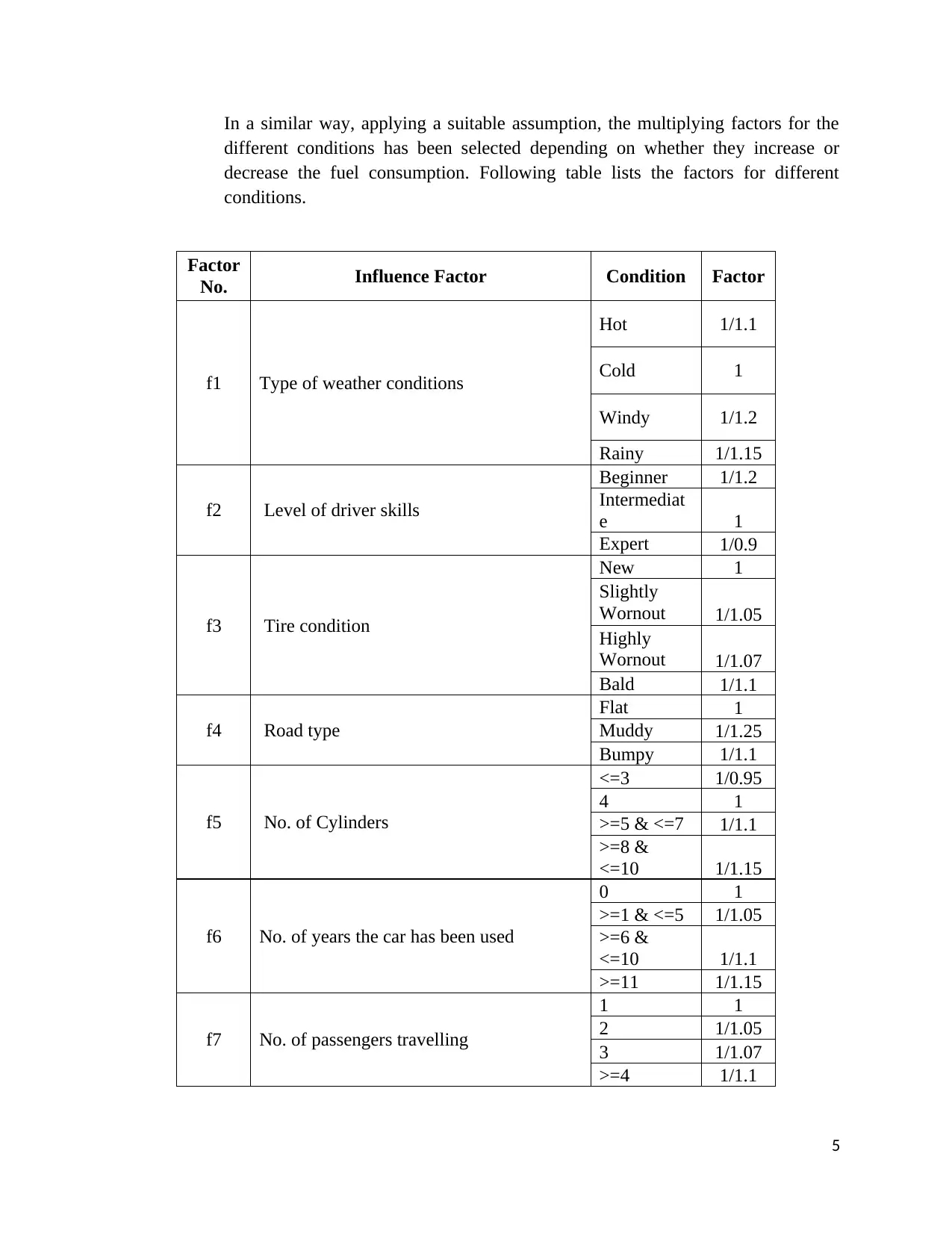
In a similar way, applying a suitable assumption, the multiplying factors for the
different conditions has been selected depending on whether they increase or
decrease the fuel consumption. Following table lists the factors for different
conditions.
Factor
No. Influence Factor Condition Factor
f1 Type of weather conditions
Hot 1/1.1
Cold 1
Windy 1/1.2
Rainy 1/1.15
f2 Level of driver skills
Beginner 1/1.2
Intermediat
e 1
Expert 1/0.9
f3 Tire condition
New 1
Slightly
Wornout 1/1.05
Highly
Wornout 1/1.07
Bald 1/1.1
f4 Road type
Flat 1
Muddy 1/1.25
Bumpy 1/1.1
f5 No. of Cylinders
<=3 1/0.95
4 1
>=5 & <=7 1/1.1
>=8 &
<=10 1/1.15
f6 No. of years the car has been used
0 1
>=1 & <=5 1/1.05
>=6 &
<=10 1/1.1
>=11 1/1.15
f7 No. of passengers travelling
1 1
2 1/1.05
3 1/1.07
>=4 1/1.1
5
different conditions has been selected depending on whether they increase or
decrease the fuel consumption. Following table lists the factors for different
conditions.
Factor
No. Influence Factor Condition Factor
f1 Type of weather conditions
Hot 1/1.1
Cold 1
Windy 1/1.2
Rainy 1/1.15
f2 Level of driver skills
Beginner 1/1.2
Intermediat
e 1
Expert 1/0.9
f3 Tire condition
New 1
Slightly
Wornout 1/1.05
Highly
Wornout 1/1.07
Bald 1/1.1
f4 Road type
Flat 1
Muddy 1/1.25
Bumpy 1/1.1
f5 No. of Cylinders
<=3 1/0.95
4 1
>=5 & <=7 1/1.1
>=8 &
<=10 1/1.15
f6 No. of years the car has been used
0 1
>=1 & <=5 1/1.05
>=6 &
<=10 1/1.1
>=11 1/1.15
f7 No. of passengers travelling
1 1
2 1/1.05
3 1/1.07
>=4 1/1.1
5
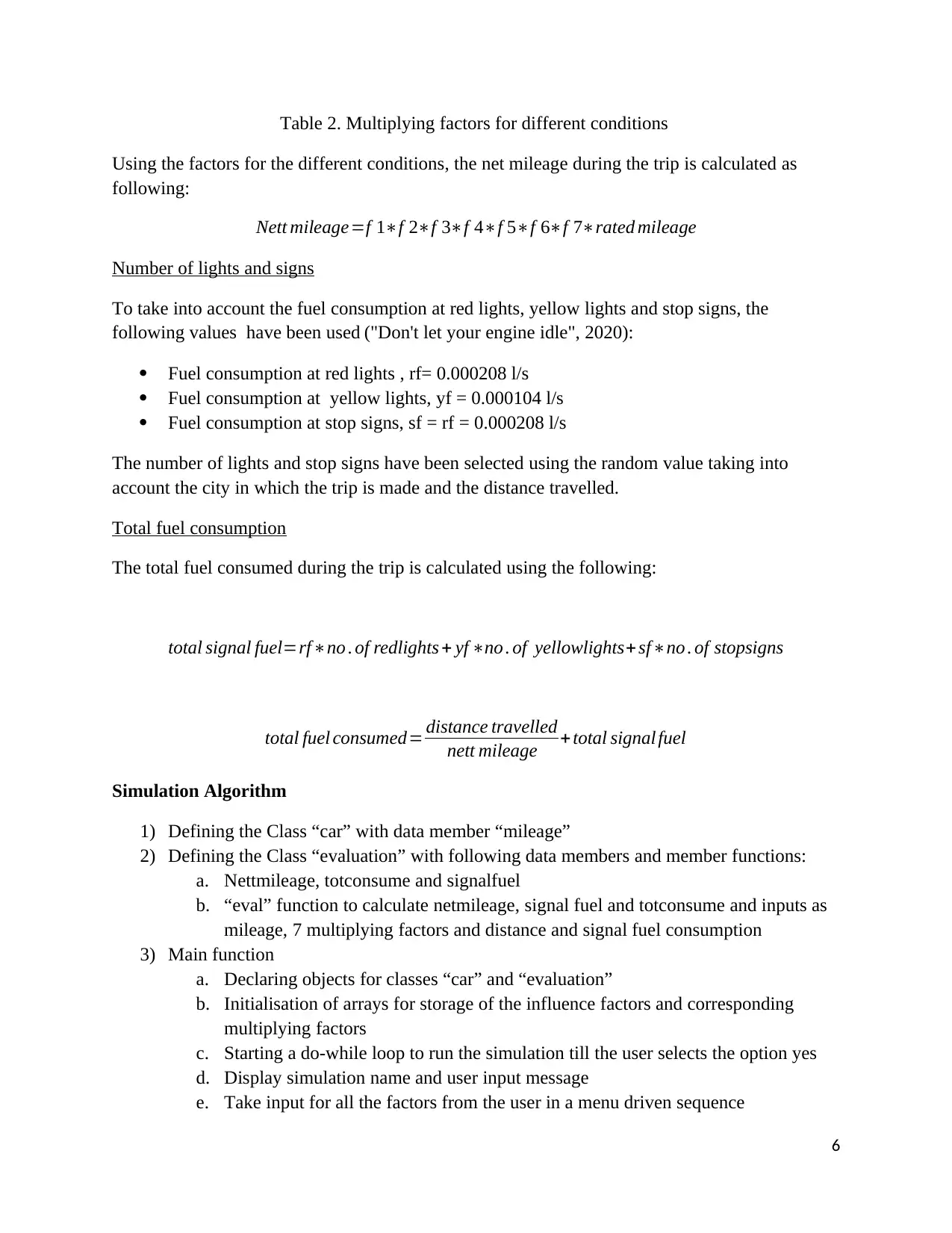
Table 2. Multiplying factors for different conditions
Using the factors for the different conditions, the net mileage during the trip is calculated as
following:
Nett mileage=f 1∗f 2∗f 3∗f 4∗f 5∗f 6∗f 7∗rated mileage
Number of lights and signs
To take into account the fuel consumption at red lights, yellow lights and stop signs, the
following values have been used ("Don't let your engine idle", 2020):
Fuel consumption at red lights , rf= 0.000208 l/s
Fuel consumption at yellow lights, yf = 0.000104 l/s
Fuel consumption at stop signs, sf = rf = 0.000208 l/s
The number of lights and stop signs have been selected using the random value taking into
account the city in which the trip is made and the distance travelled.
Total fuel consumption
The total fuel consumed during the trip is calculated using the following:
total signal fuel=rf∗no . of redlights + yf ∗no . of yellowlights+ sf∗no . of stopsigns
total fuel consumed= distance travelled
nett mileage + total signal fuel
Simulation Algorithm
1) Defining the Class “car” with data member “mileage”
2) Defining the Class “evaluation” with following data members and member functions:
a. Nettmileage, totconsume and signalfuel
b. “eval” function to calculate netmileage, signal fuel and totconsume and inputs as
mileage, 7 multiplying factors and distance and signal fuel consumption
3) Main function
a. Declaring objects for classes “car” and “evaluation”
b. Initialisation of arrays for storage of the influence factors and corresponding
multiplying factors
c. Starting a do-while loop to run the simulation till the user selects the option yes
d. Display simulation name and user input message
e. Take input for all the factors from the user in a menu driven sequence
6
Using the factors for the different conditions, the net mileage during the trip is calculated as
following:
Nett mileage=f 1∗f 2∗f 3∗f 4∗f 5∗f 6∗f 7∗rated mileage
Number of lights and signs
To take into account the fuel consumption at red lights, yellow lights and stop signs, the
following values have been used ("Don't let your engine idle", 2020):
Fuel consumption at red lights , rf= 0.000208 l/s
Fuel consumption at yellow lights, yf = 0.000104 l/s
Fuel consumption at stop signs, sf = rf = 0.000208 l/s
The number of lights and stop signs have been selected using the random value taking into
account the city in which the trip is made and the distance travelled.
Total fuel consumption
The total fuel consumed during the trip is calculated using the following:
total signal fuel=rf∗no . of redlights + yf ∗no . of yellowlights+ sf∗no . of stopsigns
total fuel consumed= distance travelled
nett mileage + total signal fuel
Simulation Algorithm
1) Defining the Class “car” with data member “mileage”
2) Defining the Class “evaluation” with following data members and member functions:
a. Nettmileage, totconsume and signalfuel
b. “eval” function to calculate netmileage, signal fuel and totconsume and inputs as
mileage, 7 multiplying factors and distance and signal fuel consumption
3) Main function
a. Declaring objects for classes “car” and “evaluation”
b. Initialisation of arrays for storage of the influence factors and corresponding
multiplying factors
c. Starting a do-while loop to run the simulation till the user selects the option yes
d. Display simulation name and user input message
e. Take input for all the factors from the user in a menu driven sequence
6
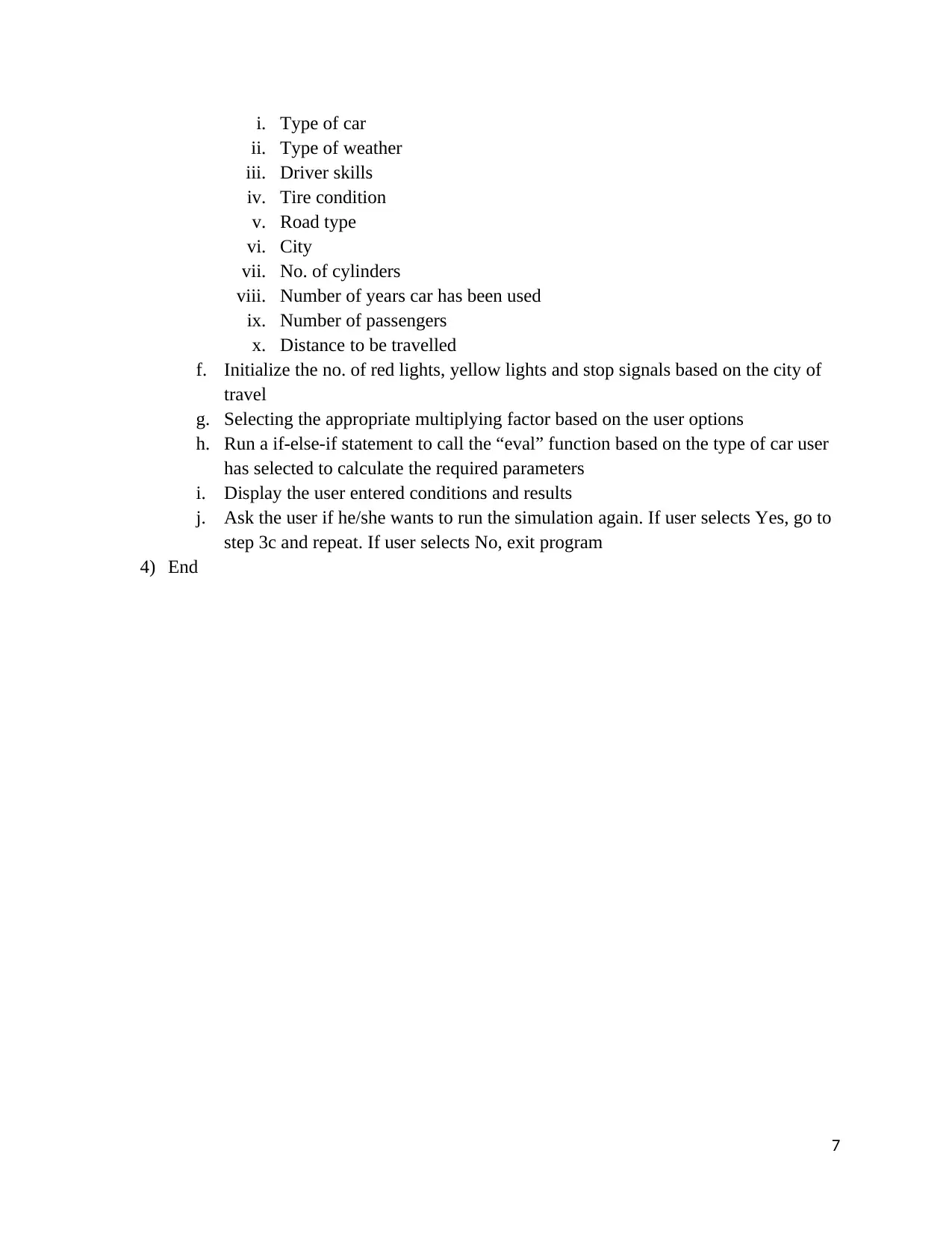
i. Type of car
ii. Type of weather
iii. Driver skills
iv. Tire condition
v. Road type
vi. City
vii. No. of cylinders
viii. Number of years car has been used
ix. Number of passengers
x. Distance to be travelled
f. Initialize the no. of red lights, yellow lights and stop signals based on the city of
travel
g. Selecting the appropriate multiplying factor based on the user options
h. Run a if-else-if statement to call the “eval” function based on the type of car user
has selected to calculate the required parameters
i. Display the user entered conditions and results
j. Ask the user if he/she wants to run the simulation again. If user selects Yes, go to
step 3c and repeat. If user selects No, exit program
4) End
7
ii. Type of weather
iii. Driver skills
iv. Tire condition
v. Road type
vi. City
vii. No. of cylinders
viii. Number of years car has been used
ix. Number of passengers
x. Distance to be travelled
f. Initialize the no. of red lights, yellow lights and stop signals based on the city of
travel
g. Selecting the appropriate multiplying factor based on the user options
h. Run a if-else-if statement to call the “eval” function based on the type of car user
has selected to calculate the required parameters
i. Display the user entered conditions and results
j. Ask the user if he/she wants to run the simulation again. If user selects Yes, go to
step 3c and repeat. If user selects No, exit program
4) End
7
Paraphrase This Document
Need a fresh take? Get an instant paraphrase of this document with our AI Paraphraser
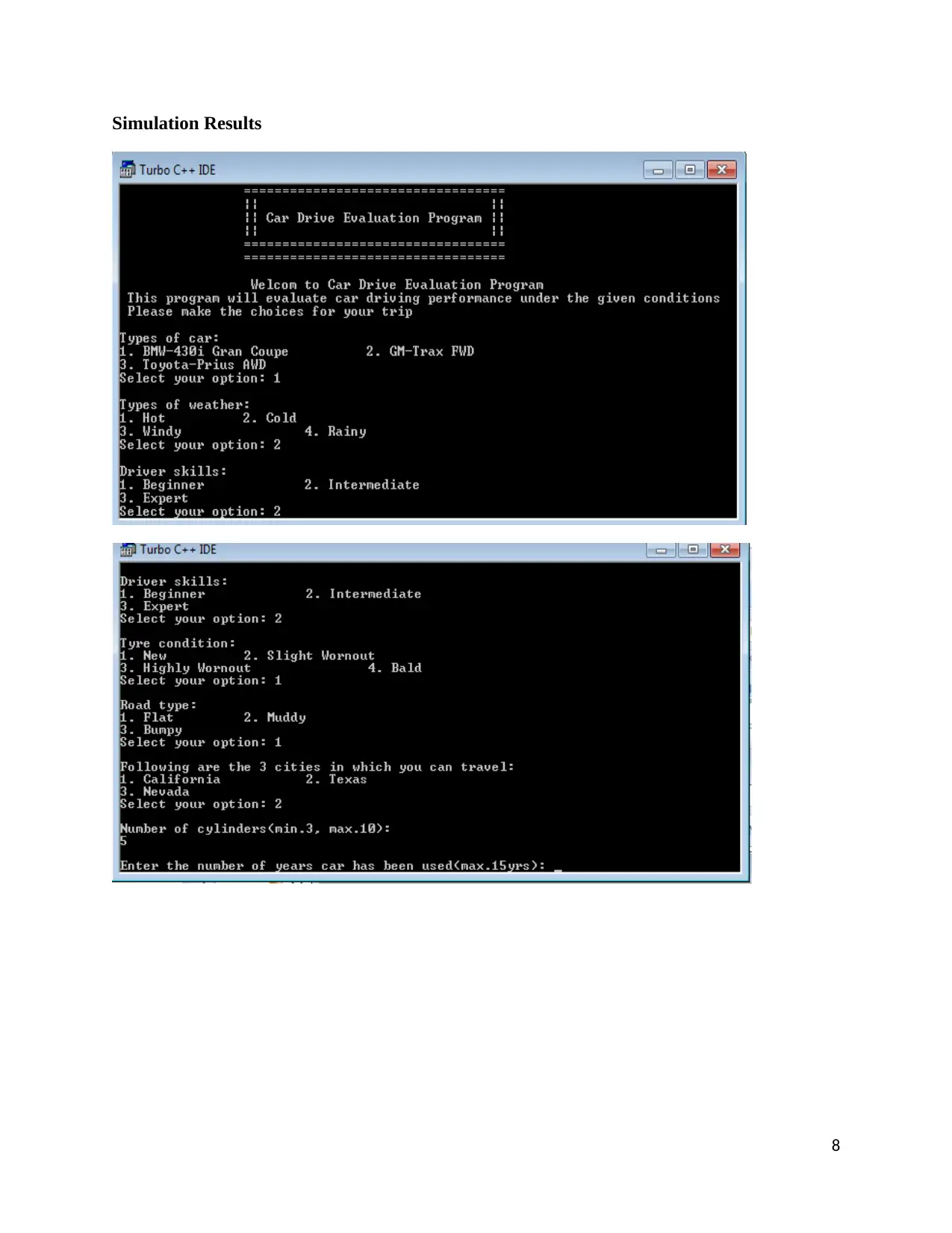
Simulation Results
8
8
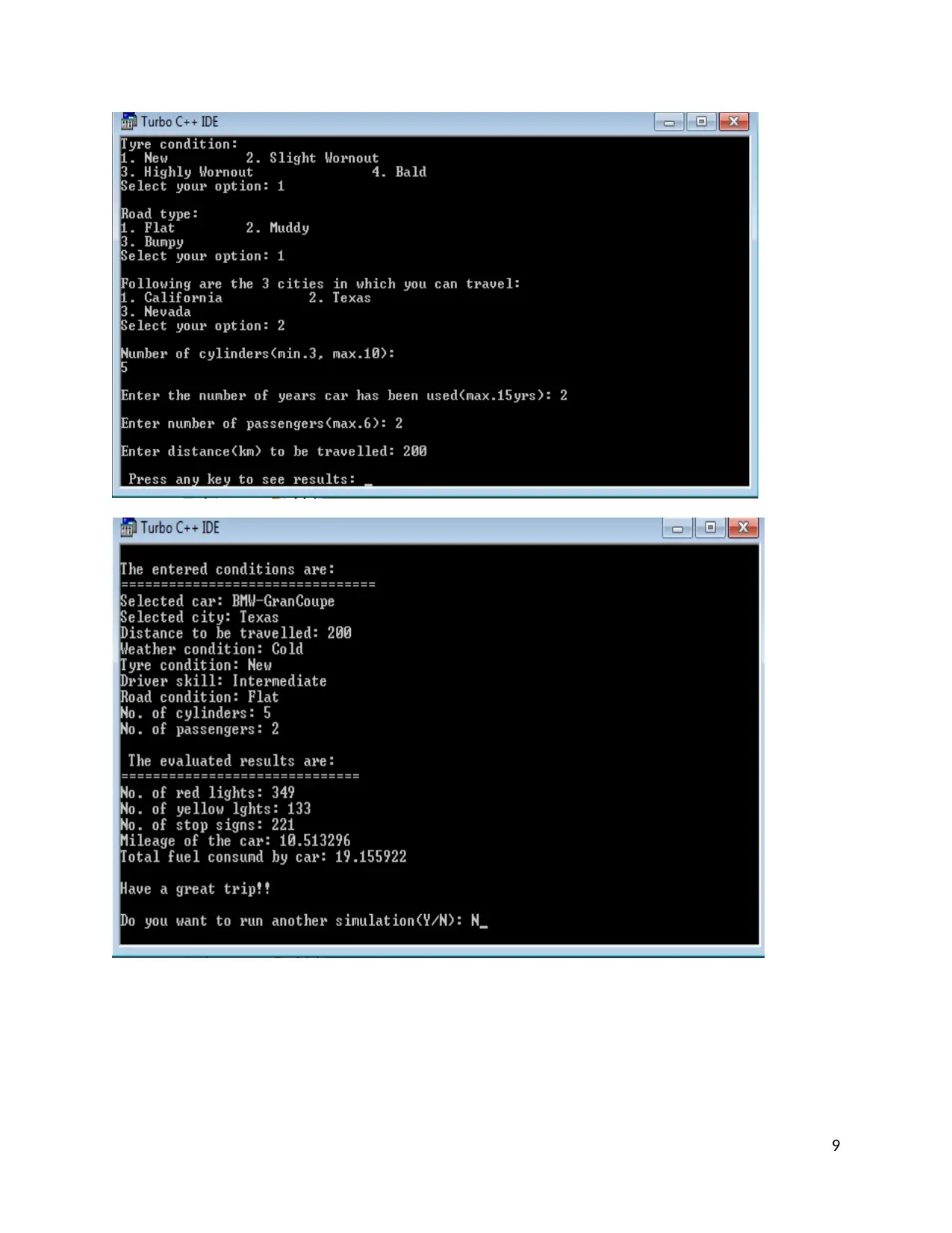
9
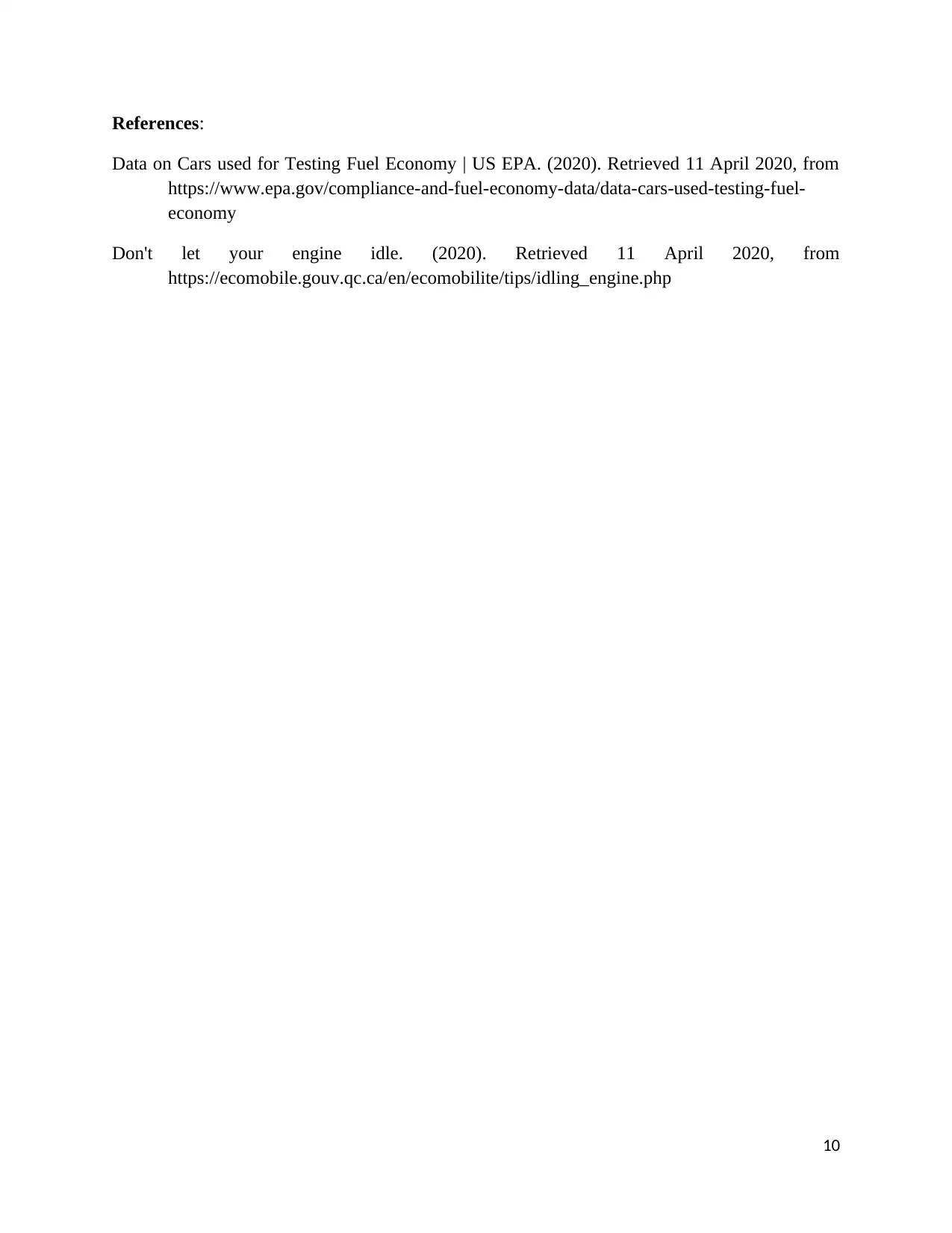
References:
Data on Cars used for Testing Fuel Economy | US EPA. (2020). Retrieved 11 April 2020, from
https://www.epa.gov/compliance-and-fuel-economy-data/data-cars-used-testing-fuel-
economy
Don't let your engine idle. (2020). Retrieved 11 April 2020, from
https://ecomobile.gouv.qc.ca/en/ecomobilite/tips/idling_engine.php
10
Data on Cars used for Testing Fuel Economy | US EPA. (2020). Retrieved 11 April 2020, from
https://www.epa.gov/compliance-and-fuel-economy-data/data-cars-used-testing-fuel-
economy
Don't let your engine idle. (2020). Retrieved 11 April 2020, from
https://ecomobile.gouv.qc.ca/en/ecomobilite/tips/idling_engine.php
10
1 out of 10
Your All-in-One AI-Powered Toolkit for Academic Success.
+13062052269
info@desklib.com
Available 24*7 on WhatsApp / Email
![[object Object]](/_next/static/media/star-bottom.7253800d.svg)
Unlock your academic potential
© 2024 | Zucol Services PVT LTD | All rights reserved.